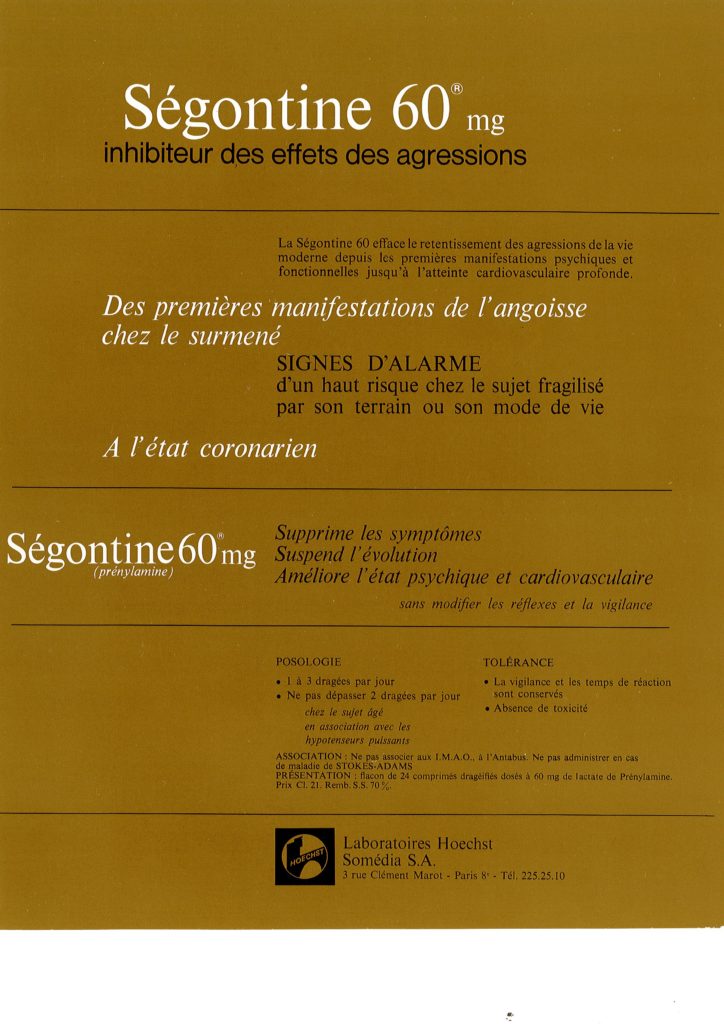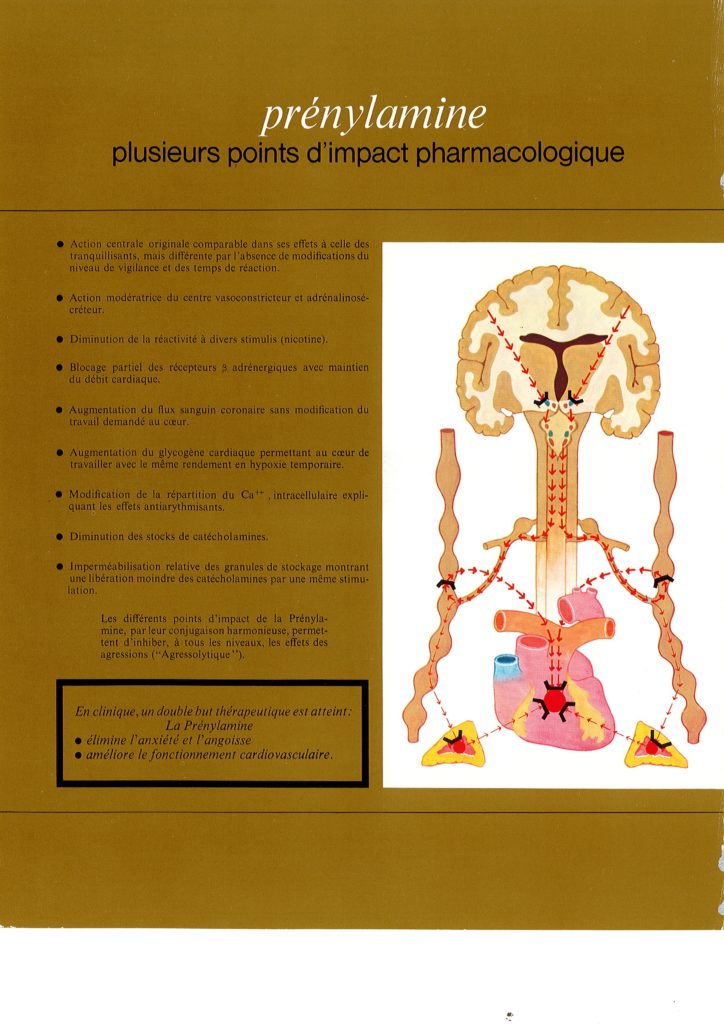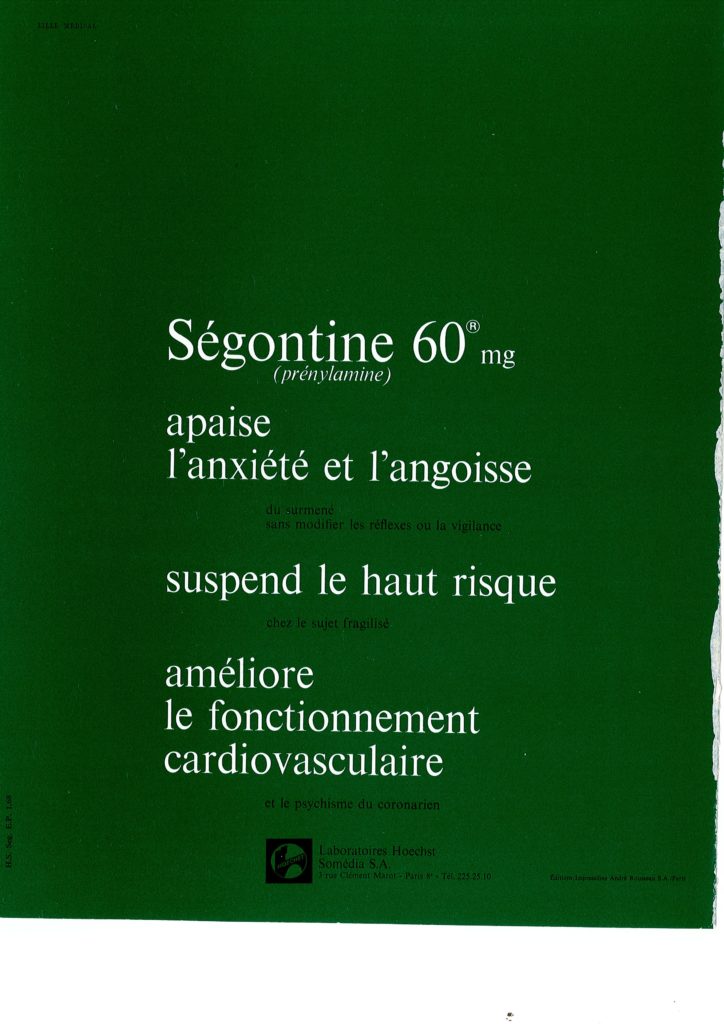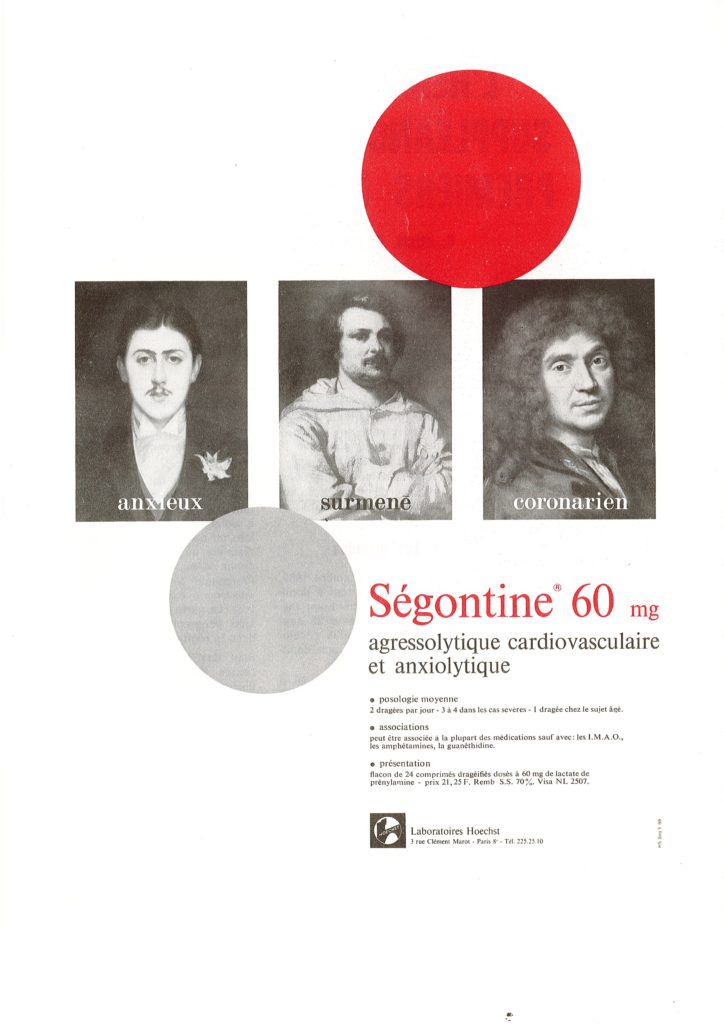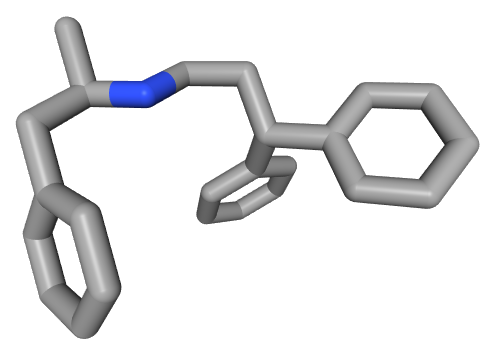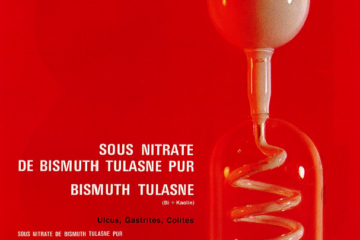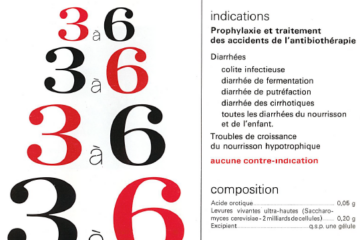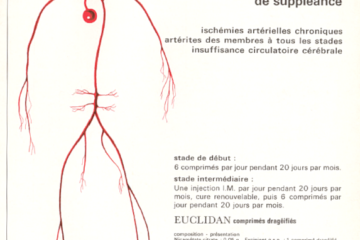Prenylamine (3,3-diphenyl-N-(1-phenylpropanyl)propanamine]), the active principle of Segontine®, has been marketed in Europe the 1960s of the treatment of angina and removed from the market in 1988, after it was considered having an insufficient efficacy in relation to safety. The drug was found to induce episodes of ventricular tachycardia of the ‘torsade de pointes’ types in some cases. There was alternative options available by the late 1970s (such as β blockers and more potent calcium antagonists).
At the pharmacological level, prenylamine is a nonselective calcium antagonist, inhibitor of calmodulin-dependent enzymes. It functions by decreasing the sympathetic stimulation of the cardiac muscle predominantly by depletion of transmitter substance from adrenergic nerve endings. It also reduced myocardial metabolism by blocking magnesium-dependent calcium transport ATPase. These pharmacological effects support the drug action in patients suffering from angina pectoris. Prenylamine also showed local anesthetic effects, leading to a prolonged local anesthesia.
The marketed product was a racemic mixture. The two enantiomers of the drug were active but S-(+)-prenylamine was eliminated considerably faster from human plasma than R-(-)-prenylamine suggesting a stereoselective metabolism.
The medical communication around Segontine® highlighted the multifactorial mechanism of action of the molecule and the complex molecular machinery modulated by the drug. But there was also another type of communication underlining the characteristic of three famous French writers: Marcel Proust (1871-1922, anxious), Alphonse Daudet (1840-1897, overworked), and Jean-Baptiste Poquelin, called Molière (1622-1673, coronary). These famous characters may have appreciated the use of prenylamine at that time…
